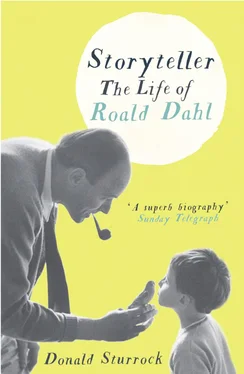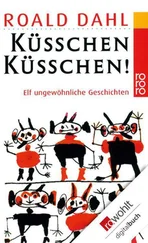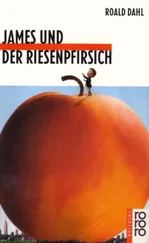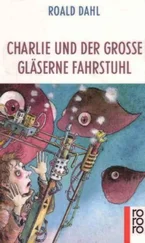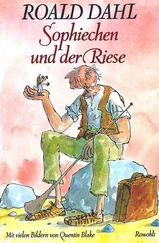In April 1927, Sofie Magdalene sold Cumberland Lodge, and the Dahl family moved to Bexley in Kent. The spacious new house, Oak-wood, was only 15 miles from Central London, yet had two acres of tree-filled grounds tended by a gardener called Martin, and, much to Roald’s delight, a hard tennis court. 79It had good railway connections to Roedean, where Alfhild was about to start school, and where Sofie Magdalene hoped Else and Asta would shortly follow. The sophisticated maverick Douglas Highton remembered it as “luxurious and civilized” — with a selection of cooked food laid out on the table each morning at breakfast, and a billiard room with full-sized table, which was used each night after a dinner, over which Sofie Magdalene presided in her “gentle and dignified way”. 80But a few years later, other more conventional guests found the Dahls running wild. One was amazed at the “filthy language” used by the children, to which their mother “paid no regard”, sitting “stone deaf”, while Roald and his sisters indulged themselves in a torrent of swearing. 81His youngest sibling, Asta, agreed that the children “didn’t have many restrictions” and that, by English standards, they were kept on a pretty loose leash. Once Roald sent her up a cedar tree in the garden, “absolutely padded out with cushions”, so that he could shoot at his ten-year-old sister with his air rifle and see how far the bullets would penetrate. 82She gleefully consented. On another occasion he rigged up an elaborate aerial “chariot” made out of Meccano, containing soup cans of cold water, and suspended it on a long wire so he could “bomb” local ladies, as they walked their dogs along the lane at the bottom of the garden. The result pleased him hugely. “The ladies who had halted and looked up on hearing the rushing noise of my chariot overhead, caught the cascade of water full in their face…. It was tremendous,” Dahl remembered. And, despite his mother’s “steely eye” when she discovered what he had done, “for days afterwards I experienced the pleasant warm glow that comes to all of us when we have brought off a major triumph”. 83
If holidays at home were like paradise for the children, going away was even better. Easter was usually spent on the coast of Wales, at the picturesque seaside resort of Tenby, where the family rented a house in the Old Harbour, right on the seafront. There, accompanied by both of their maids from Bexley, Roald took donkey rides on the beach, collected winkles from the rock pools, walked with the dogs on the clifftops, and occasionally took the boat to nearby Caldy Island, where he gathered seabirds’ eggs. He also indulged his rich schoolboy sense of humour. Else, his younger sister, remembers Roald asking her to lean out of the window of the house and shout at the passersby: “One skin, two skin, three skin, four skin!” 84without understanding why her brother was rolling on the floor with laughter.
But Tenby was as nothing compared to the summer holidays in Norway. After a candlelit dinner in Oslo, at the home of their Hesselberg grandparents and their two eccentric spinster aunts, the children and their indomitable mother would head off to the coast and the countless islands that lay scattered through the fjords. These afforded endless opportunities for swimming, fishing, sunbathing, eating seafood, and yet more pranks, such as replacing the tobacco in their future brother-in-law’s pipe with goat droppings and waiting to see how he would react when he smoked it. Asta remembered sailing in Louis’s boat The Hard Black Stinker and handing up buckets to be filled with fresh prawns from the returning shrimp boats, while Roald revelled in the lyrical pleasures of fishing. “On our summer holidays in Norway we would often row out into the fjord in the early evenings to fish,” he wrote later. “We dropped anchor and baited our hooks with mussels and let out the lines until the weights hit the bottom. Then, unless we were after flat fish, we pulled our lines up two good arms-lengths above the seabed and waited. Each of us held the line in the proper manner around the back of the first finger with the thumb on top, hardly daring to speak because, although the fjord was deep, we weren’t certain that the fish mightn’t hear us.” 85
And in the evenings, Sofie Magdalene told stories. Sometimes they were English ones, read from books, but often the fare was darker and more Scandinavian. These were the ones Roald and Alfhild remembered: fairy tales, either freshly invented or adapted from the nineteenth-century collections of Peter Christian Asbjornsen and Jorgen Moe. 86These ac counts of wicked trolls and other mythical Norwegian creatures that lived in the dark pine forests were unsentimental yarns, usually with a highly developed sense of the fantastical and the grotesque. They featured satires on the consequences of greed, stories about battling giants and cloud monsters, tales of children who soared high into the sky on the backs of eagles, and a series about outsize insects and frogs entitled Have Animals Got Souls? They were to have a profound influence on the young Roald and shape his sense of what a story should be. Fables such as The Boy Who Challenged a Troll to an Eating Competition, The Hare Who Laughed Until His Jaws Cracked and The Tabby Cat Who Ate Too Much overflow with zany black humour. They clearly struck a chord with Roald, for he would reuse their themes and reinvent them in his own manner many years later.
These tales were illustrated by an artist called Theodor Kittelsen. Kit-telsen was a Norwegian mystic — a visionary and fantastical painter, much loved by the Dahls. He was born in 1857 on the west coast of Norway, in Kragero, the birthplace of Ludvig Aadnesen. Like his contemporary Edvard Munch, many of his paintings and illustrations are not for the fainthearted. He too was fascinated by the grotesque. His drawings of the bubonic plague, for example, which raged through medieval Norway, are remarkable for their evocations of death and loneliness in a dark, hostile landscape; yet he was also able to depict the evanescent swiftness of a running stream, the misty stillness of an autumn sunrise, and the strange shapeless wonderland of a familiar human landscape transformed by a heavy fall of snow. His eye is sharply observant, and his sense of humour usually coarse and hard-edged in a way that prefigures Dahl’s own. In Morbid Love, for example, a bedraggled green mosquito and a frog in a crumpled white ball gown embrace by the side of a tranquil blue lake. A distant sun is setting. At the water’s edge stands an empty bottle of wine. Beside it a drained glass lies on its side. The two animal lovers are parting. Both are weeping. But the pathos of this melancholy moment will soon be shattered. For, unbeknown to them, a mischievous crab has emerged from the water and is about to nip the grasshopper’s leg, while on a branch above their heads a warbling bird has just evacuated its bowels. In a moment the resulting mess will splatter all over the lovers’ tear-stained faces. 87
This dimension of the ironic and absurd masked Kittelsen’s profound fascination for the natural world. A fellow painter, Erik Werenskjold, praised his concern with “man’s pettiness and absurdity, his vindictiveness and jealousy”, which was set against “the lofty and unfathomable grandeur of Nature, as revealed in snowclad mountains, desolate hills or a tiny fragrant blossom”. 88This combination of the satirist and the naturalist, the fantasist and the observer, also defined an important aspect of Dahl’s own aesthetic. His sisters, particularly the sharp and observant Alfhild, saw the link at once between their brother’s tales and those Norwegian legends they had been told as children, recognizing in both a distinctive blend of humour and fear, combined with a sense of the solitary majesty of the natural world. 89Recalling his childhood diaries, scribbled high up in the branch of an ancient chestnut tree, far away from other humans and deep within the realm of nature, Dahl himself would later write: “In springtime, I was in a cave of green leaves surrounded by hundreds of those wonderful white candles that are the conker trees flowers. In winter it was less mysterious, but even more exciting because I could see the ground miles below me as well as the landscape all around. Sitting there, above the world, I used to write down things that would have made my mother and my sisters stretch their eyes with disbelief had they ever read them. But I knew they wouldn’t.” 90
Читать дальше
